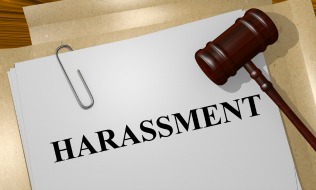

With Bill 132, Ontario’s Sexual Violence and Harassment Action Plan Act, receiving royal assent at the Legislative Assembly of Ontario in March, there are key details for employers to be aware of, particularly the amendments to the Occupational Health and Safety Act (OHSA), or Bill 168.
Employers are accountable for revisiting their workplace violence and harassment policies, and developing new training protocols before September 2016. Here are three key details to know:
1. ‘Workplace harassment’ definition fine-tuned
Workplace harassment will be redefined to include engaging in unwelcome comments or conduct because of sex, sexual orientation, gender identity or gender expression, and making unwelcome sexual advances where the offender is in a position to confer, grant or deny a benefit or advancement against a worker. To minimize abuse of the terms, the amendment clarifies that “reasonable actions” taken by an employer relating to the management of workers or the workplace is not harassment.
2. Crack down on training and instruction
Employers will be required to develop written programs, to be reviewed “at least annually,” that formally respond to harassment issues. Programs must include measures for reporting incidents to an outside source if necessary, affirm information remains confidential unless required by law, and set out how incidents will be investigated, which includes how the parties involved will be made aware of outcomes and corrective action. While Bill 132 requires employers to provide formalized program training, the bill does not specify how it must be delivered, giving employers flexibility to personalize training to suit the workplace environment.
3. Formal investigations become mandatory
While employers will be obliged to investigate and report on all incidents of workplace harassment, what many will find most striking about Bill 132 is the Ministry of Labour’s unprecedented power to order independent investigations and reporting – and at the employer’s expense. While some businesses use outside sources to conduct investigations already, small businesses may struggle to find the resources. However, there is currently no indication whether the ministry will consider employer size and resources beforehand or if employers can place limits to scope and cost.
Overall, the amendments to OHSA seem designed to encourage more extensive use of independent workplace investigators, rather than depending on internal investigators, whether from the legal team or human resources department. Ontario employers will need to prepare for this when revisiting workplace violence and harassment policies and training practices.
To prove compliance with the new requirements, employers should consider developing a filing system for all associated records should an inspection by the Ministry of Labour or employee inquiries occur. Those that fail to comply with the amendments are subject to fines and, in extreme cases, criminal convictions.
The changes come into effect on Sept. 8, 2016.
Laurie Jessome is partner and employment law expert at Cassels Brock & Blackwell LLP.
